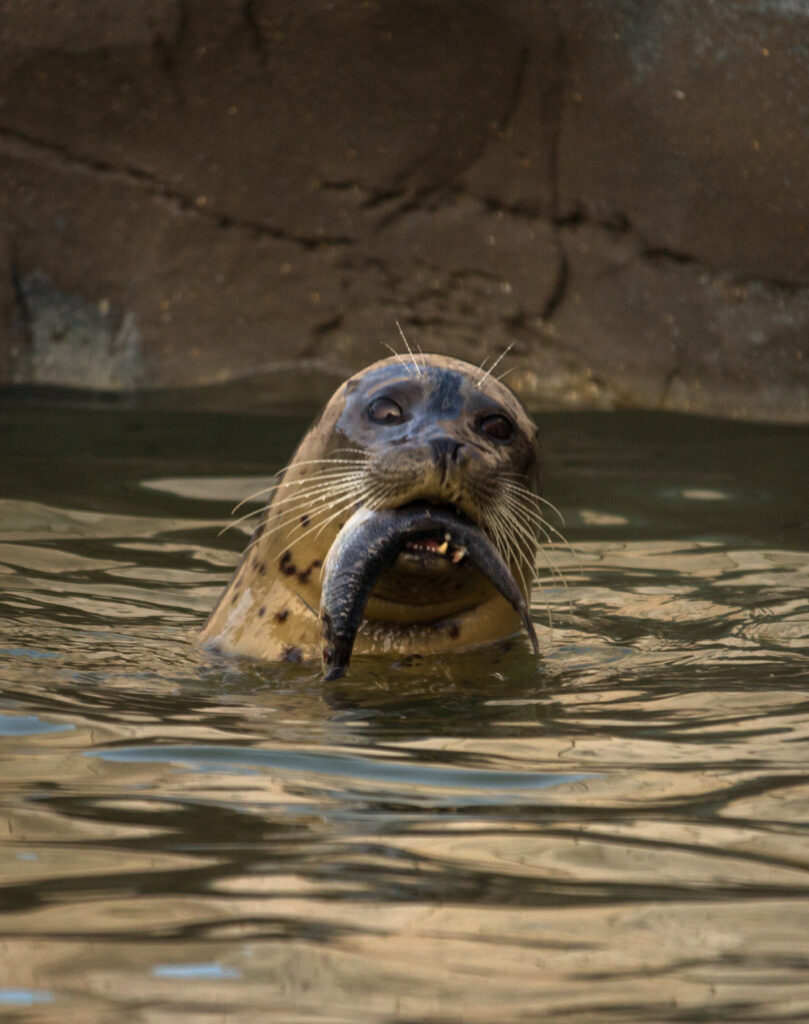Multispecies management of ocean fisheries is difficult at the best of times, but it’s even harder when managers pretend a major predator isn’t even there. We’re talking about fishing off Newfoundland and Labrador, and the “elephants in the room” are, of course, seals.
The province has been dependent on fishing – including sealing – throughout its history. But pressure from animal rights groups, starting in the 1960s, saw markets for seal products shrink dramatically. Since then, seal populations, and in particular of harp seals, have grown exponentially.
Meanwhile, the province’s most valuable fishery, cod, was in serious decline, prompting the Department of Fisheries and Oceans (DFO) to impose a moratorium in 1992. Officially this was blamed on overfishing, but fishermen were convinced predation by burgeoning seal populations was at least a factor. Whatever the case, the hope was that cod stocks would bounce back, but thirty years later that hasn’t happened, inevitably raising questions about whether the DFO knows what it’s doing.

Today, fishermen remain convinced that seals are playing an important role in hindering the recovery of cod, and that the DFO is in denial – hence the “elephants in the room” idiom.
At the very least, they say, all those seals must be eating a lot of something! Studies in the Barents Sea by Norwegian scientists indicate that harp seals require 7-9 kgs of seafood a day, or approximately 3 tonnes annually. That number is substantial when you consider the global population of harp seals is estimated at 7.6 million, plus 2-3 million seals of other species.

Against this backdrop of controversy, it’s unsurprising that a recent video, shot on May 30 by inshore fisherman Jason Branton from Winterton, went viral. (Source) Branton’s video doesn’t show those familiar images of breeding seals on ice floes “as far as the eye can see”, but unusually was shot on the open ocean. Over four or five miles, he estimates, of so many harp seals it looks like the sea is boiling!
The timing of the video was also perfect for Roy Pieroway of St. John’s, who titled a June 4 letter to Saltwire, “Seals are still Newfoundland and Labrador’s elephants in the room”. (Source) So apropos was the title that we plagiarised it for this blog post!
Why, asked Pieroway, are the media so keen to report on reduced quotas in fisheries (like capelin, for example – Source), and a new plan to reduce predation by green crabs on young lobsters, but won’t talk about controlling seal numbers? “The seal population continues to grow, with a negative impact on many fish species,” he says, “and we do nothing to control them. Why?”

“Records show a correlation between decreasing commercial harvests and the increasing seal population,” he states matter of factly. And it’s not like the government doesn’t know. As recently as 2018, he points out, the DFO reported that, “Predation by gray seals was likely the greatest contributor to the increased mortality in southern gulf cod.”
“This imbalance just keeps getting worse as the annual reproduction [of seals] is around 10 per cent,” he says, though the DFO contests this. “Surely, there must be some sort of plan in the works to deal with it before it is too late. Or, is it being left for some miraculous self correction?”
The problem with an elephant in the room, of course, is that it doesn’t just go away. And this one never will if fisheries managers refuse to recognize it is there.
Sources:
https://ffaw.ca/the-latest/news/dfo-announces-2021-capelin-fishery-remain-open -25-decrease/



